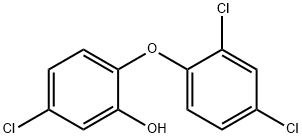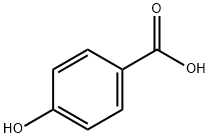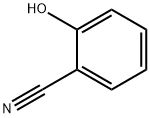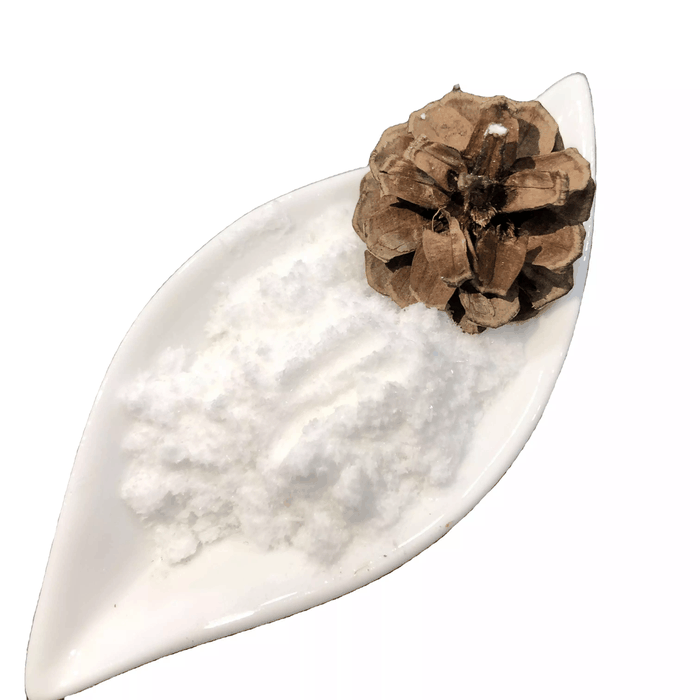3,4-Dihydroxybenzonitrile
Synonym(s):Protocatechuonitrile
- CAS NO.:17345-61-8
- Empirical Formula: C7H5NO2
- Molecular Weight: 135.12
- MDL number: MFCD00016436
- EINECS: 241-367-9
- SAFETY DATA SHEET (SDS)
- Update Date: 2024-12-05 18:22:57

What is 3,4-Dihydroxybenzonitrile?
Chemical properties
Off-white powder
General Description
3,4-Dihydroxybenzonitrile can be prepared from 4-hydroxy-3-methoxybenzonitrile. It can also be synthesized by reacting 3,4-dimethoxybenzonitrile, lithium diisopropylamide (LDA) and 1,3-dimethyl-2-imidazolidinone (DMEU).
Properties of 3,4-Dihydroxybenzonitrile
| Melting point: | 155-159 °C (lit.) |
| Boiling point: | 334.8±32.0 °C(Predicted) |
| Density | 1.42±0.1 g/cm3(Predicted) |
| vapor pressure | 0Pa at 20℃ |
| storage temp. | Keep in dark place,Sealed in dry,Room Temperature |
| solubility | soluble in Methanol |
| form | powder to crystal |
| pka | 7.67±0.18(Predicted) |
| color | White to Almost white |
| Water Solubility | insoluble |
| BRN | 2082204 |
| InChI | InChI=1S/C7H5NO2/c8-4-5-1-2-6(9)7(10)3-5/h1-3,9-10H |
| CAS DataBase Reference | 17345-61-8(CAS DataBase Reference) |
Safety information for 3,4-Dihydroxybenzonitrile
| Signal word | Danger |
| Pictogram(s) |
 Skull and Crossbones Acute Toxicity GHS06  Exclamation Mark Irritant GHS07 |
| GHS Hazard Statements |
H301:Acute toxicity,oral H302:Acute toxicity,oral H312:Acute toxicity,dermal H315:Skin corrosion/irritation H319:Serious eye damage/eye irritation H331:Acute toxicity,inhalation H335:Specific target organ toxicity, single exposure;Respiratory tract irritation |
| Precautionary Statement Codes |
P261:Avoid breathing dust/fume/gas/mist/vapours/spray. P264:Wash hands thoroughly after handling. P264:Wash skin thouroughly after handling. P270:Do not eat, drink or smoke when using this product. P280:Wear protective gloves/protective clothing/eye protection/face protection. P304+P340:IF INHALED: Remove victim to fresh air and Keep at rest in a position comfortable for breathing. P305+P351+P338:IF IN EYES: Rinse cautiously with water for several minutes. Remove contact lenses, if present and easy to do. Continuerinsing. P405:Store locked up. P501:Dispose of contents/container to..… |
Computed Descriptors for 3,4-Dihydroxybenzonitrile
| InChIKey | NUWHYWYSMAPBHK-UHFFFAOYSA-N |
| SMILES | C(#N)C1=CC=C(O)C(O)=C1 |
3,4-Dihydroxybenzonitrile manufacturer
Synocule Research Labs Pvt Ltd
2Y
Phone:+91-9000991562
Whatsapp: +91- 9000991562
product: 17345-61-8 3,4-dihydroxybenzonitrile 98%
GRK RESEARCH LABORATORIES PVT LTD
2Y
Phone:+91-7093001765
Whatsapp: +91- 7093001765
product: 17345-61-8 3,4-dihydroxybenzonitrile 98%+
Sri Vyjayanthi Labs Pvt Ltd
1Y
Phone:+919959551278
Whatsapp: +91-9959551278
product: 17345-61-8 3,4-Dihydroxybenzonitrile 98%
New Products
(S)-3-Aminobutanenitrile hydrochloride 4-Methylphenylacetic acid N-Boc-D-alaninol N-BOC-D/L-ALANINOL Tert-butyl bis(2-chloroethyl)carbamate 3-Morpholino-1-(4-nitrophenyl)-5,6-dihydropyridin- 2(1H)-one Furan-2,5-Dicarboxylic Acid Tropic acid 1-Bromo-3,5-Di-Tert-Butylbenzene S-2-CHLORO PROPIONIC ACID ETHYL ISOCYANOACETATE 2-Bromo-1,3-Bis(Dimethylamino)Trimethinium Hexafluorophosphate 4-IODO BENZOIC ACID 3-NITRO-2-METHYL ANILINE 1-(2,4-DICHLOROPHENYL) ETHANAMINE (2-Hydroxyphenyl)acetonitrile 4-Bromopyrazole 2-(Cyanocyclohexyl)acetic acid 4-methoxy-3,5-dinitropyridine 1-(4-(aminomethyl)benzyl)urea hydrochloride 2-aminopropyl benzoate hydrochloride diethyl 2-(2-((tertbutoxycarbonyl)amino) ethyl)malonate tert-butyl 4- (ureidomethyl)benzylcarbamate Ethyl-2-chloro((4-methoxyphenyl)hydrazono)acetateRelated products of tetrahydrofuran








You may like
-
 17345-61-8 3,4-dihydroxybenzonitrile 98%View Details
17345-61-8 3,4-dihydroxybenzonitrile 98%View Details
17345-61-8 -
 17345-61-8 3,4-Dihydroxybenzonitrile 98%View Details
17345-61-8 3,4-Dihydroxybenzonitrile 98%View Details
17345-61-8 -
 17345-61-8 3,4-dihydroxybenzonitrile 98%+View Details
17345-61-8 3,4-dihydroxybenzonitrile 98%+View Details
17345-61-8 -
 3,4-Dihydroxybenzonitrile CAS 17345-61-8View Details
3,4-Dihydroxybenzonitrile CAS 17345-61-8View Details
17345-61-8 -
 3,4-Dihydroxybenzonitrile CAS 17345-61-8View Details
3,4-Dihydroxybenzonitrile CAS 17345-61-8View Details
17345-61-8 -
 1975-50-4 98%View Details
1975-50-4 98%View Details
1975-50-4 -
 14714-50-2 (2-Hydroxyphenyl)acetonitrile 98+View Details
14714-50-2 (2-Hydroxyphenyl)acetonitrile 98+View Details
14714-50-2 -
 118753-70-1 98+View Details
118753-70-1 98+View Details
118753-70-1
Statement: All products displayed on this website are only used for non medical purposes such as industrial applications or scientific research, and cannot be used for clinical diagnosis or treatment of humans or animals. They are not medicinal or edible.